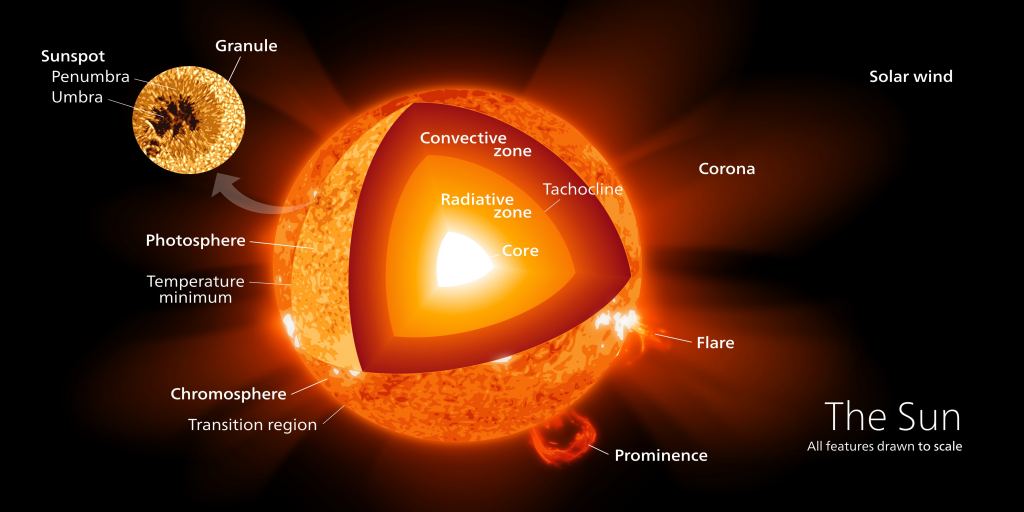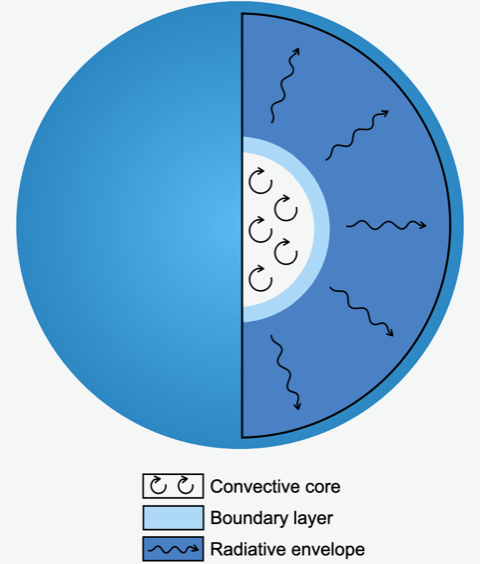Main sequence stars fuse hydrogen in their cores. It's how they produce the energy they need to shine and keeps them from collapsing under their own weight. As hydrogen is fused into helium, there is less hydrogen available in the core. This can pose a challenge for large stars. They need to fuse a tremendous amount of hydrogen to keep shining, and they can't do that when core hydrogen is depleted. Fortunately, they can solve this problem by mixing more hydrogen into their core. A new study in *Nature Astronomy* shows us how this mixing happens.
With stars like the Sun, the core is surrounded by a radiative layer. This layer is so dense that it takes photons tens of thousands of years to move through it. The atoms in this layer don't churn much, so there isn't much mixing. Above the radiative layer is a convective layer, which does mix. Hydrogen within the Sun's core isn't replenished as it's fused into helium, but there is still plenty of core hydrogen to power the Sun for billions of years.
If larger stars had a similar internal structure as our Sun, they would burn through core hydrogen fairly quickly, filling the core with "helium ash" that would limit the star's ability to fuse hydrogen. So astronomers have thought that large stars have a convective core, which would allow hydrogen from higher layers to be mixed into the core. But how do you prove that?
This new study used a method known as asteroseismology, which looks at how the surface of a star moves and changes in brightness. While some of this can be caused by things like stellar flares, much of it is caused by sound waves within the star. The process is similar to the way you might study the vibrations of a bell by listening to its ring. Since a star's internal vibrations are affected by the density and motion of its interior, asteroseismology is a powerful way to study stars.
The team looked at 26 B-type stars that are known to pulse in brightness. These bright blue stars are between 3 and 20 times the mass of our Sun, and they pulse at a rate from 12 hours to 5 days. Using data from NASA's Kepler mission, the team was able to show that many of these stars have a convective core, thus allowing hydrogen to mix.
One interesting result was that the amount of mixing doesn't correlate with the age of the star. It is not the case that mixing increases as a star ages and gets hotter. Instead, the rate of mixing is quite variable. Some stars have very little core mixing, while others mix at a rate a million times higher. Rather than age, the mixing seems to be related to the amount of internal rotation a star has.
There is plenty more to study here. The level of mixing in a star's core can affect the lifetime and evolution of the star. While large stars typically have much shorter lifetimes than our Sun, their lifetimes may not simply depend on their mass. As we apply asteroseismology to more stars in the future, we will likely find more factors that are in the mix.
Reference: Pedersen, May G., et al. " Internal mixing of rotating stars inferred from dipole gravity modes." *Nature Astronomy* (2021): 1-8.
 Universe Today
Universe Today


